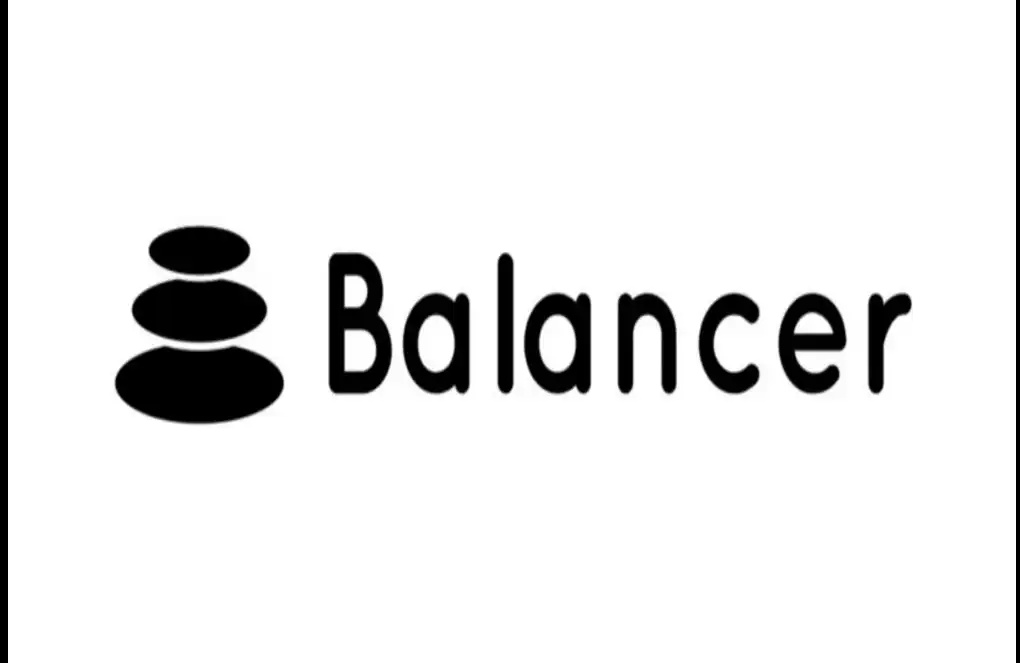Milady experienced a sharp rise followed by a decline. How to short and hedge with NFTFi in extreme market conditions?
Author: 0xLaughing, Rhythm BlockBeats

"Value investing is nothing, go all in Pepe and live in the palace."
The recent Meme trend has made the cryptocurrency market crazy. However, many KOLs have pointed out that behind the wealth effect of Meme Coins like Pepe, there is a "behind-the-scenes manipulator" - Milady Maker. It was launched in August 2021 as an old PFP NFT project that has experienced ups and downs. The community has also suffered heavy losses in the extremism storm before, but it has survived tenaciously with its unique subculture and support from multiple NFTFi projects. It has also taken advantage of the Meme trend and the "evil flower" has come to the forefront from behind the scenes.

The holders of Milady Maker are not only making a fortune with Meme Coin, but also have been lucky enough to receive even more good news. On May 11th, Twitter CEO Elon Musk posted a tweet on social media with the Milady Maker series NFT image attached, and the caption "There is no meme, I love you." This tweet caused the floor price of Milady Maker to skyrocket from about 3.75 ETH to over 7 ETH in just one hour.

However, similar to Musk's intermittent "shilling" of Doge Coin, the price of Milady Maker also surged and then fell sharply after Musk's tweet. As of the time of writing, the floor price of Milady Maker has fallen below 4 ETH, erasing its previous gains. Although positive news can cause its price to skyrocket in a very short period of time, its price cannot continue to rise due to a possible lack of follow-up funding in the market, eventually retracting to the starting point of the volatility and forming a "Hsaka Bleeds" structure.
When the "top signal" appears, hedging and shorting may be the biggest demand for Milady holders/NFT traders. However, unlike Doge Coin, Milady Maker has the characteristics of non-fungibility and poor liquidity as an NFT. To solve this problem, perpetual contract protocols for NFTs have emerged. This article will introduce the two mainstream NFT perpetual contract protocols currently available on the market: nftperp and NFEX.
NFT perpetual contract introduction
What is an NFT perpetual contract?
Traditional financial futures markets had an inherent limitation in that they had settlement dates and limited leverage trading capabilities, which could not adapt to the 24/7 trading of the cryptocurrency market. Therefore, BitMEX launched perpetual contracts on May 13, 2016, which used innovative funding rates to regulate the price of spot and contract as closely as possible, unlocking the opportunity to use leverage of up to 100x for long/short positions. Its emergence forever changed the cryptocurrency and entire financial industry. Later, excellent DEX Perp products such as Perpetual Protocol, dYdX, GMX, and Gains Network emerged one after another, further enriching the pattern of on-chain financial derivative trading.
From CEX to DEX, from centralization to decentralization, with the reference of perpetual contract protocols in the DeFi market, a perpetual contract platform that allows leveraged long/short positions on NFTs has emerged. It can solve the following pain points in the current NFT market:
• Unable to short NFT and hedge risks.• Most people are unable to purchase expensive blue-chip NFTs, and therefore cannot enjoy the benefits of their appreciation.• There is no simple and capital-efficient way to engage in leveraged trading.
DEX in DeFi eliminates intermediaries and allows users to trade directly from their wallets in a non-custodial manner. DEX also provides unique designs in transaction execution models. The two most commonly used models in trading platforms are Automated Market Maker (AMM) and Order Book models. These two models are also applied to nftperp and NFEX, two of the most popular NFT perpetual contract protocols in the market.
nftperp Introduction

Product Design Key Points
• Built on Arbitrum
• The vAMM (Virtual Automated Market Maker) mechanism is used to match NFT perpetual contract transactions, without the need for real liquidity providers or order books.
• Users can use ETH as collateral to trade perpetual contracts with up to 10x leverage on 7 NFT projects, including BAYC and CryptoPunks.• The protocol integrates the Upshot NFT price evaluation protocol with Chainlink oracle to feed real-time NFT price data on-chain, based on the floor price of blue-chip NFTs.
Team and Financing Information

On November 25th last year, nftperp announced that it had completed a seed round of financing worth $1.7 million at a valuation of $17 million.
The round was participated by institutions such as Dialectic, Maven 11, Flow Ventures, DCV Capital, Gagra Ventures, AscendEX Ventures, Perridon Ventures, Caballeros Capital, Cogitent Ventures, Nothing Research, Apollo Capital, Tykhe Block Ventures, and OP Crypto.
Currently, there is limited information available about the team, but it is known that the founder of the team is Joseph Liu. In addition, there are several investment analysts and researchers, including Mckenna, Nick Chong, Ben Roy, and Ben Lakoff, who serve as team advisors.
NFEX Introduction

Product Design Key Points
• Built on the Ethereum mainnet.• Adopting a decentralized order book (DLOB) model.
• Users are also allowed to use ETH as collateral to trade perpetual contracts for 19 NFT projects, with a maximum leverage of 50x.
• The protocol calculates the "NFEXI Price Index" based on the floor price and bid price of blue-chip NFTs to track NFT prices in real-time, helping to achieve price discovery and reduce market manipulation in the NFT market.
Team and Financing Information

On February 15th of this year, NFEX announced that it has completed a $3 million seed round of financing, led by ABCDE Capital, with participation from Amber Group and Firestone Ventures. The founder of ABCDE Fund is Du Jun and BMAN. Du Jun is a co-founder of Huobi and a partner of Huobi Eco Fund. He has invested in many well-known blockchain projects such as Filecoin, Polkadot, and Solana. BMAN is a senior blockchain investor and entrepreneur who has founded several successful blockchain projects such as BitMart and BitKeep.
The co-founder and GP BMAN of ABCDE Capital once praised the founder of NFEX team for their rich experience in establishing exchanges and providing liquidity for new asset categories, and believed that they were the most capable candidates for the product. GP BMAN believes that NFT is still in its early stages, with about 99.99% of NFT projects lacking sufficient liquidity, and innovative products like NFEX have the potential to reverse the situation and bring about industry changes with confidence in NFEX and other innovative products.
Comparison of Trading Models
nftperp and NFEX use different trading models, nftperp uses a virtual automated market maker (vAMM) model, while NFEX uses a decentralized order book (DLOB) model.
nftperp: Using vAMM for matching trades, with a robust and tamper-proof "real floor price" pricing mechanism

vAMM How to independently settle profits and losses
Like regular AMMs, vAMM also uses x * y = k for automatic price discovery. However, vAMM does not require real liquidity providers. Users deposit real assets as collateral into the smart contract treasury, which then mints virtual assets. These virtual assets are then traded and quoted in the liquidity pool according to x * y = k, providing the ability for shorting and leveraged trading while avoiding impermanent loss. As an independent settlement market, all profits and losses in vAMM are settled directly in the collateral pool, meaning that a trader's profit in vAMM is another trader's loss.
nftperp borrowed from Solana's perpetual contract protocol Drift's dynamic vAMM mechanism based on vAMM, and adopted DVL (Dynamic Virtual Liquidity) to dynamically adjust the virtual assets x and y in the equation x * y = k based on price offsets (see nftperp documentation for reference). With this model, nftperp ensures that prices always trade on the deepest part of the vAMM liquidity curve, matching virtual liquidity with trading demand, allowing traders to obtain the best slippage and available liquidity.
Additionally, in order to ensure the high availability of nftperp vAMM even in abnormal market conditions, the following two optimizations have been implemented:
• Dynamic Funding Rate: The standard funding rate takes into account position size, contract mark price, and oracle price, while nftperp considers the total ratio between long and short positions to better balance open contracts. In addition, the funding rate is updated every hour to ensure that the contract price does not deviate too far from the NFT trading market floor price.
• Price Fluctuation Limit: A ±2% fluctuation limit is set for the contract price of each block to protect the protocol from flash loan attacks and manipulation of insurance fund losses during high volatility periods. Drift v1 experienced this situation, where the large fluctuations in LUNA price caused unrealized losses and imbalanced profits within the system, and excess profits could be withdrawn from the insurance fund without restriction.

Upshot x Chainlink
Regarding price feeding for oracle, nftperp integrates Chainlink oracle data with the NFT price evaluation protocol Upshot, taking reference from DropsDAO NFT oracle model. This ultimately calculates a secure and tamper-proof "True Floor Price" to be fed to the platform for use.
Calculation method:
1. Collection and analysis: Collect and analyze on-chain/off-chain NFT transaction events on top NFT markets.
2. Check data validity: Determine whether the data is valid based on the transaction event type, Token ID, and transaction cleaning detection.
3. Filter abnormal data: Use statistical methods and volatility scores to filter extreme outliers and potential outliers.
4. Calculation: Use the Time-Weighted Average Price (TWAP) algorithm to calculate the filtered data and obtain the "true floor price".
The data involved in the calculation of "Real Floor Price" is extracted from the transaction data of Opensea, LooksRare, and X2Y2 APIs through the oracle operated by nftperp. The calculated price is updated every time a qualified public transaction occurs, ensuring that the price is up-to-date and protecting users from price manipulation.
NFEX: Using order book matching for trading, pricing with the "NFEXI Price Index" that closely tracks real-time prices

The difference between the latest price, index price, and marked price
The floor price is a widely used indicator for evaluating NFTs, representing the minimum price for NFTs in a specific collection across markets. However, the current market is susceptible to manipulation of the floor price, which may result in significant differences between perpetual contract prices and spot prices for NFTs.
NFEX adopts a decentralized order book (DLOB) model and has created the NFEXI (NFEX Index) to calculate a fair spot price index by obtaining price data from four major NFT markets, namely Blur, Opensea, LooksRare, and X2Y2. This allows for real-time tracking of NFT prices and helps achieve price discovery while reducing market manipulation. NFEX currently calculates and updates the index price every 3 seconds.
NFEXI (NFEX Index) can be used to hedge risks, speculate on the future price changes of NFT targets, and calculate target prices. It considers the fair value of underlying assets and aims to prevent unexplained liquidation due to market manipulation or lack of liquidity.
Comparison between the two
NFTPerp is built on Arbitrum, and compared to NFEX, which is built on the Ethereum mainnet, the Gas Fee for a single transaction is lower. NFEX chooses to trade without the need for repeated authorization after a single authorized deposit, meaning that placing and hanging orders does not go on-chain, but rather is executed on centralized servers. Although this simplifies operations and saves Gas Fees, it also exposes the problem of insufficient decentralization.
In terms of trading model, nftperp has added dynamic funding rates and volatility limits on the basis of vAMM, and uses the Time-Weighted Average Price (TWAP) algorithm to calculate the "real floor price" before feeding the oracle. Although this can to some extent avoid the problem of price manipulation, it also makes it unable to respond to extreme market conditions in a timely manner.
(Regarding price manipulation: For example, in November of last year, the 7th largest holder of BAYC, Franklin, "manipulated" the floor price to trigger a BendDAO auction and implement his "dumping profit" strategy. For more information, please refer to the article "BAYC Crash: One Man Guards the Pass, Ten Thousand Men Liquidate".)



nftperp, NFEX, and Blur prices at the same time
The real case can be referred to the "Musk releases Milady image tweet" event mentioned at the beginning of the article: this tweet caused the floor price of Milady Maker to skyrocket from about 3.75 ETH to over 7 ETH in just one hour, and then quickly retreated.
During this period, although there was a certain price difference between nftperp and NFEX and the spot price (the spot price on Blur was 4.99 E, the price on nftperp was 4.06E, and the price on NFEX was 4.71E), the price difference on NFEX was smaller and more reflective of the actual market price.
Conclusion
All along, the NFT market has been committed to solving the problem of "insufficient liquidity" in spot trading, and many excellent products and innovative mechanisms have emerged to promote the continued development of NFT finance from the valuation and pricing of NFTs, matching methods, and other aspects. A healthy financial market requires market participants to be able to play the roles of both long and short at any time, in order to hedge trading risks, increase profit opportunities, and enrich trading strategies. Now, the development of NFT perpetual contracts will allow retail investors to not only execute a buy-low-sell-high strategy on NFT spot trading, but also enrich trading methods, meet the needs of NFT traders for leveraged long/short NFT positions, and participate in blue-chip NFT trading with small amounts of capital.
However, this track is still in its early stages and there are still issues such as price manipulation and inability to support long-tail NFT assets. Ultimately, the upstream issues of the NFT market, such as its small size, poor liquidity, and difficulty in valuation and pricing, have not been well resolved, which has hindered the development of downstream NFTFi products and prevented the potential of the NFTFi track from being unleashed. If NFT technology can be widely adopted as envisioned and the NFT market can "expand the cake," with products such as dYdX and GMX DEX leading the way, the NFT perpetual contract track will be a new value oasis.
Welcome to join the official BlockBeats community:
Telegram Subscription Group: https://t.me/theblockbeats
Telegram Discussion Group: https://t.me/BlockBeats_App
Official Twitter Account: https://twitter.com/BlockBeatsAsia


 Forum
Forum Finance
Finance
 Specials
Specials
 On-chain Eco
On-chain Eco
 Entry
Entry
 Podcasts
Podcasts
 Activities
Activities
 OPRR
OPRR








